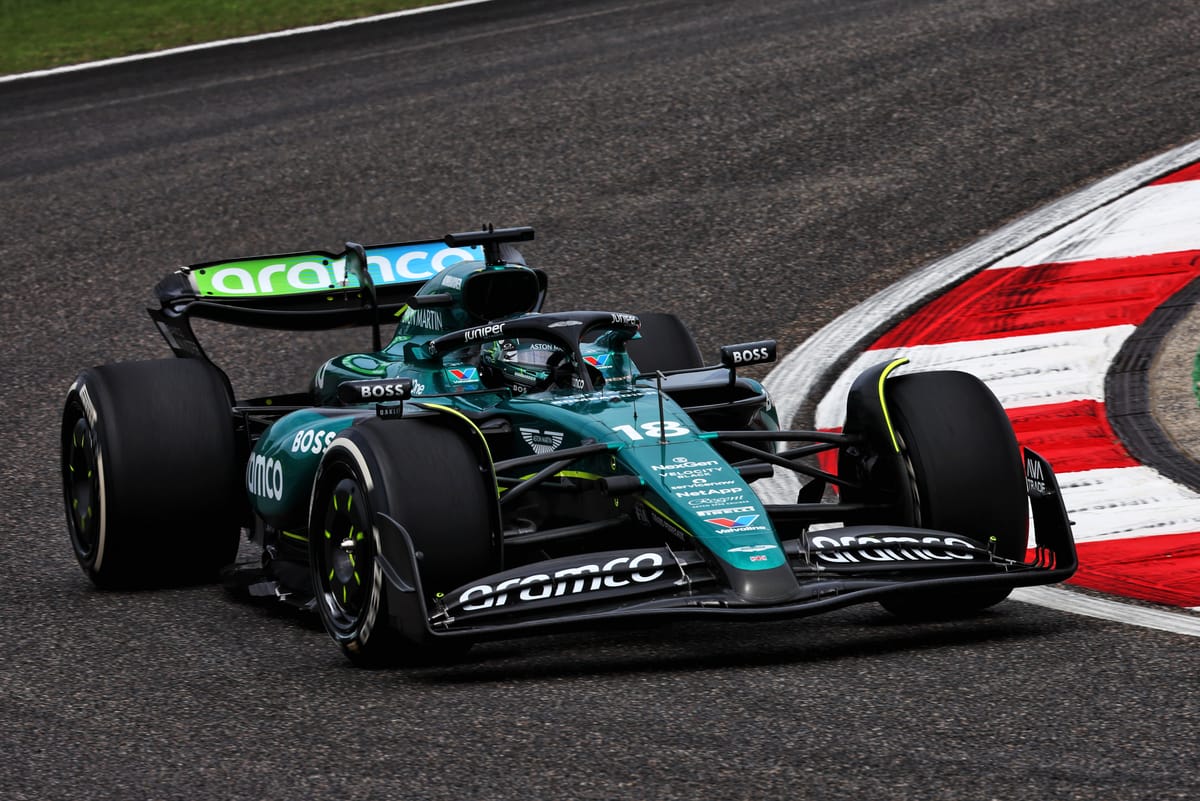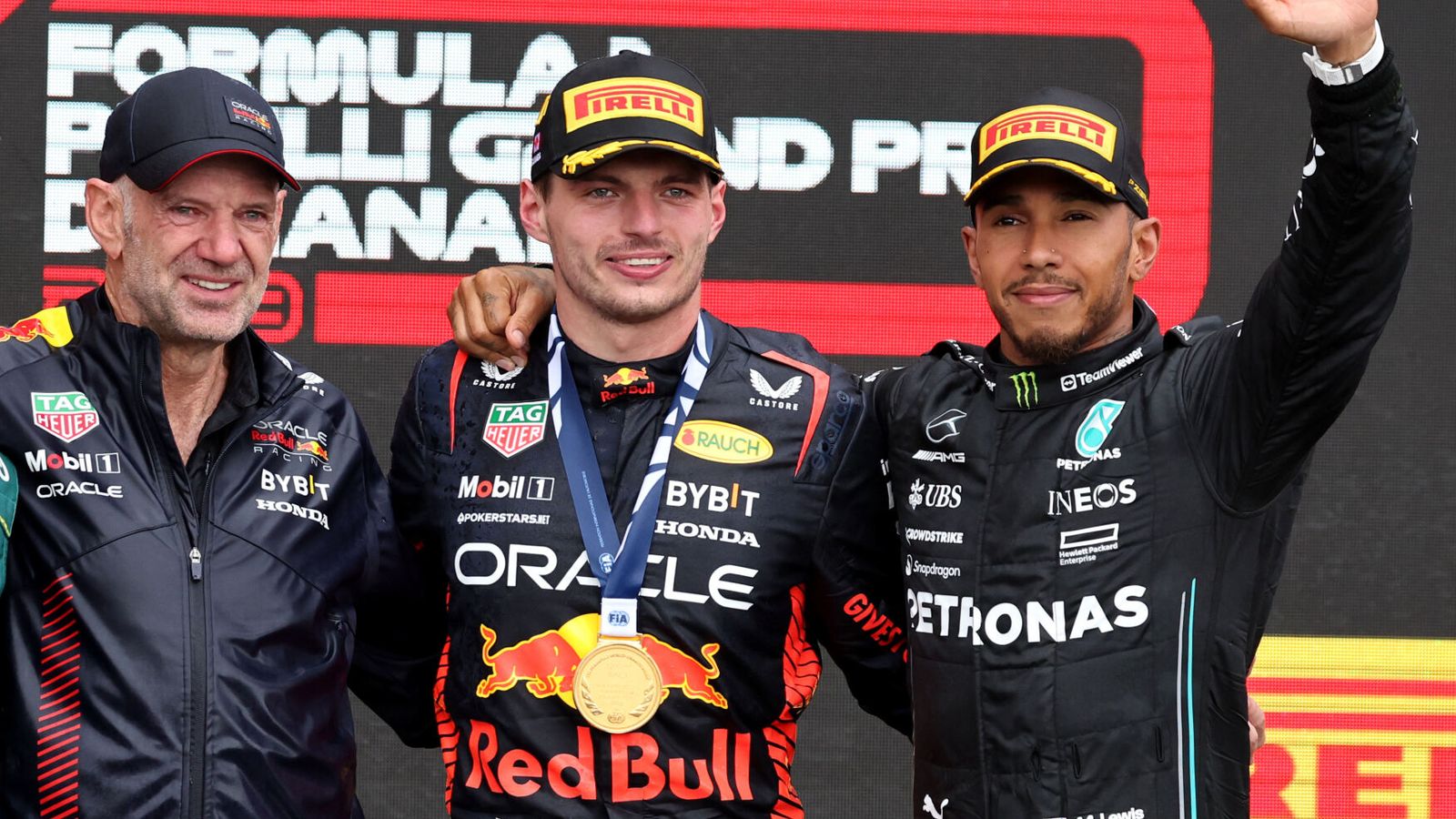A fascinating opening practice session at Formula 1’s Chinese Grand Prix has answered few questions going into the first sprint qualifying event of the season.
The new-for-2024 format means that Friday’s only 60-minute practice leads into qualifying for the sprint race rather than the grand prix itself.
But one constant at the Shanghai International Circuit was that – as is typically the case when FP1 kicks off a sprint weekend – strategies varied wildly as teams worked out how to best evaluate the track, the tyres and their cars before committing to a qualifying set-up.
That led to an unusual pecking order headed by Aston Martin’s Lance Stroll and McLaren driver Oscar Piastri respectively, although world champion Max Verstappen lurking in third-fastest hinted at a more familiar competitive scenario.
CHALLENGES ON CHINA RETURN
Unsurprisingly it took a while for drivers to get to grips with a Shanghai circuit that has been at least partly resurfaced since it was last used by F1 five years ago. But it did not look as problematic as some feared on Thursday.
Home hero Zhou Guanyu reported early on that track grip was not high but also not too bad and there was a notable absence of big moments, spins or shunts – the most obvious, and unusual, problem being a five-minute red flag because of a very small bizarre fire on a patch of grass on the inside of Turn 7.
The track itself was clearly still tricky though. Several drivers had small snaps under power, or ran deep into some of the track’s slower corners as they sussed out the limits.
There were also at least two pitlane-entry blips, one for Fernando Alonso and one for Piastri.
Both overshot on the approach as the entry tightens and goes left into the pitlane itself.
Fernando’s in explore mode 😄
Alonso takes a detour down the escape road at the pit entry before finding his way back! 👀#F1 #ChineseGP pic.twitter.com/qSsBsWTc3x
— Formula 1 (@F1) April 19, 2024
In Alonso’s case he locked up and had to weave through the escape road barriers, pirouette and rejoin, whereas Piastri stopped his McLaren, reversed and got going again.
Another slightly strange pitlane entry incident occurred between Lewis Hamilton and Piastri as Piastri slowed to let a Red Bull by before the last turn, but then didn’t let Hamilton through as the Mercedes driver expected.
Lewis Hamilton locks up into the final turn and runs off into the pit lane entry 👀#F1 #ChineseGP pic.twitter.com/Wk79iff0gs
— Formula 1 (@F1) April 19, 2024
Hamilton locked up and went straight on at the final corner so opted to move across into the pitlane and received a black and white flag for crossing the line at pit entry.
SPLIT STRATEGIES
The way FP1 played out was very obviously influenced by the need to relearn the track, validate simulation data for a weekend of unknowns, hone the car before parc ferme sets in for sprint qualifying and the sprint race, and handle the harsh sprint weekend allocation of only six sets of soft tyres.
That was obvious just in how F1’s usual ‘big three’ teams approached the session.
Whereas Red Bull used a set of mediums and softs, Ferrari seemed to keep both cars on softs throughout. This had the downside of its times not improving late on with final runs on the same set, but it has kept a set in hand for the rest of the weekend.
Mercedes, meanwhile, stuck to the hards for the duration. This means the team is light on potentially crucial soft-tyre information for the sprint portion of the weekend but has a full quota of softs in hand.
WHO WAS ACTUALLY QUICK?
Verstappen set the early pace, as he so often does on either a new circuit or in tricky conditions, using his medium tyres – but track evolution and softer compounds meant that benchmark was always going to be beaten.
His best of 1m38.498 before the red flag was quickly beaten by the first proper soft runners after the session resumed.
Charles Leclerc was the first to usurp Verstappen but a litany of drivers taking top spot made it very difficult to establish a true competitive order as teams conducted different run plans.
Alex Albon (Williams) went fastest – but slipped to eighth by the end of the session – before Piastri and finally Stroll improved as well, Stroll’s 1m36.302s at the death being three tenths of seconds quicker than Piastri, Verstappen and the other Red Bull of Sergio Perez.
Lando Norris should have been in the lead group but aborted a lap that was quickest in the first two sectors.
Both Haas drivers in their upgraded cars finished in the top six and Esteban Ocon gave Alpine some hope that its own developments might trigger a step forward, setting the seventh fastest time.
Neither Ferrari or Mercedes made it into the top 10 due to their teams’ respective FP1 strategies.
Practice 1 Results
| Pos | Name | Car | Best Time | Gap Leader |
|---|---|---|---|---|
| 1 | Lance Stroll | Aston Martin-Mercedes | 1m36.302s | |
| 2 | Oscar Piastri | McLaren-Mercedes | 1m36.629s | +0.327s |
| 3 | Max Verstappen | Red Bull-Honda RBPT | 1m36.660s | +0.358s |
| 4 | Sergio Pérez | Red Bull-Honda RBPT | 1m36.690s | +0.388s |
| 5 | Nico Hülkenberg | Haas-Ferrari | 1m37.101s | +0.799s |
| 6 | Kevin Magnussen | Haas-Ferrari | 1m37.118s | +0.816s |
| 7 | Esteban Ocon | Alpine-Renault | 1m37.213s | +0.911s |
| 8 | Alex Albon | Williams-Mercedes | 1m37.229s | +0.927s |
| 9 | Daniel Ricciardo | RB-Honda RBPT | 1m37.238s | +0.936s |
| 10 | Valtteri Bottas | Sauber-Ferrari | 1m37.530s | +1.228s |
| 11 | Guanyu Zhou | Sauber-Ferrari | 1m37.626s | +1.324s |
| 12 | Yuki Tsunoda | RB-Honda RBPT | 1m38.006s | +1.704s |
| 13 | Charles Leclerc | Ferrari | 1m38.090s | +1.788s |
| 14 | Carlos Sainz | Ferrari | 1m38.284s | +1.982s |
| 15 | Logan Sargeant | Williams-Mercedes | 1m38.286s | +1.984s |
| 16 | Lando Norris | McLaren-Mercedes | 1m38.630s | +2.328s |
| 17 | George Russell | Mercedes | 1m38.806s | +2.504s |
| 18 | Lewis Hamilton | Mercedes | 1m38.839s | +2.537s |
| 19 | Fernando Alonso | Aston Martin-Mercedes | 1m38.936s | +2.634s |
| 20 | Pierre Gasly | Alpine-Renault | 1m39.276s | +2.974s |

Olivia Martin is a dedicated sports journalist based in the UK. With a passion for various athletic disciplines, she covers everything from major league championships to local sports events, delivering up-to-the-minute updates and in-depth analysis.








